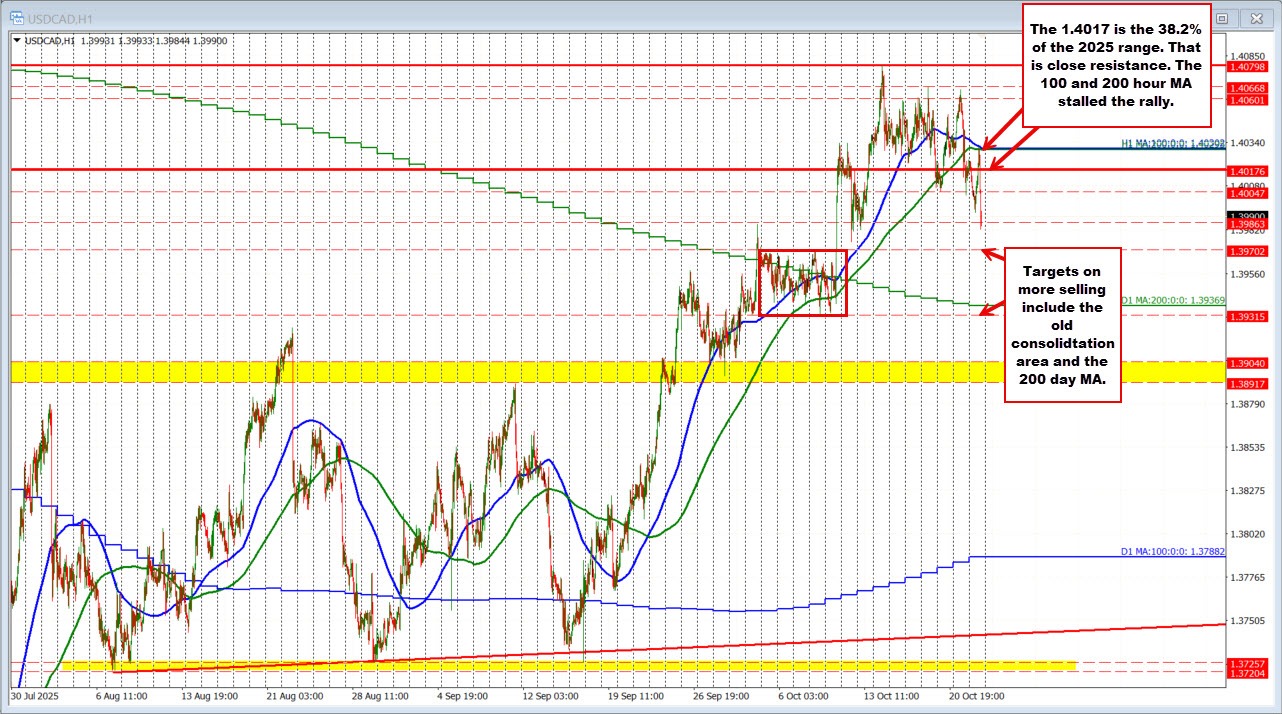The USDCAD started the North American session with a push to the upside, extending its overnight gains and moving back above the 38.2% retracement of the 2025 trading range, which comes in at 1.40176. That break initially suggested that buyers were trying to reassert control after several sessions of sideways-to-lower trade.
However, the rally stalled at a familiar technical ceiling — the converged 100-hour and 200-hour moving averages, both clustered near 1.4030. The presence of these two key averages at the same level created a strong technical barrier, and sellers were quick to lean against it. The rejection there marked a turning point in the session.
Momentum shifted further when U.S. Energy Secretary Wright confirmed not only that the U.S. government was actively buying oil for the Strategic Petroleum Reserve, but also emphasized that “it’s a great time to buy oil.” That statement triggered a sharp move higher in crude prices, which in turn boosted the Canadian dollar, given Canada’s commodity-linked economy. The result: a reversal in USDCAD, driving the pair lower from its earlier highs.
The pair has since fallen to a new session low at 1.3984, and attention now turns to the next downside target — the top of a prior swing area that acted as support between 1.3971 and 1.39315 during the period from October 2 to October 9. This zone is likely to attract buying interest on a first test, but a break below 1.3971 would begin to erode the short-term bullish bias and shift momentum back toward the sellers.
If that occurs, traders will be eyeing the 200-day moving average at 1.39369 as the next major target on the downside. That level represents a broader, longer-term trend-defining line, and a move below it would strengthen the case for a deeper corrective decline in the USDCAD.
In summary, 1.4030 on the topside and 1.3971 on the downside mark the battle lines for the pair. Holding below the dual moving averages keeps sellers in short-term control, while a break above would revive the bullish momentum and refocus attention on higher retracement targets.




